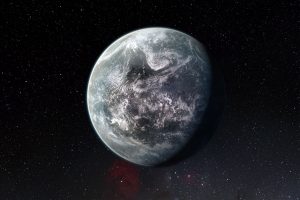
Are there other Earths orbiting other Suns? How can we detect and characterize them? And how diverse can be other planetary systems?
To tackle these (and many other) quesitons, the “Planetary Systems” team at IA focuses its activities around the two major branches, namely Exoplanet research and Solar System atmospheres. This research then focuses on multiple complementary aspects:
- the search and characterization of exoplanets using state-of-the-art radial velocity and transit photometry data;
- the understanding of astrophysical sources of noise for the detection and characterization of planets as well as methods to correct/model them;
- the statistical analysis of the discovered planet properties as well as those of the planet-host stars as a way to unveil the planet formation and evolution processes;
- the detection and characterization of exoplanet atmospheres using broad-band photometry and high-resolution spectroscopy;
- the study of solar-system planet atmospheres, with clear synergies with the exoplanet side;
- the study of minor bodies in the solar system and the cratering history in rocky planets.
All this research is supported by our strong leading participation in a number of international projects and collaborations, including ESO and ESA projects and missions:
- ESO’s ESPRESSO@VLT
- The ESA CHEOPS mission
- SPIROU@CFHT
- ESO’s NIRPS near-IR spectrograph
- ESA’s PLATO mission
- ESA’s ARIEL mission
- ESO’s ANDES@ELT spectrograph
